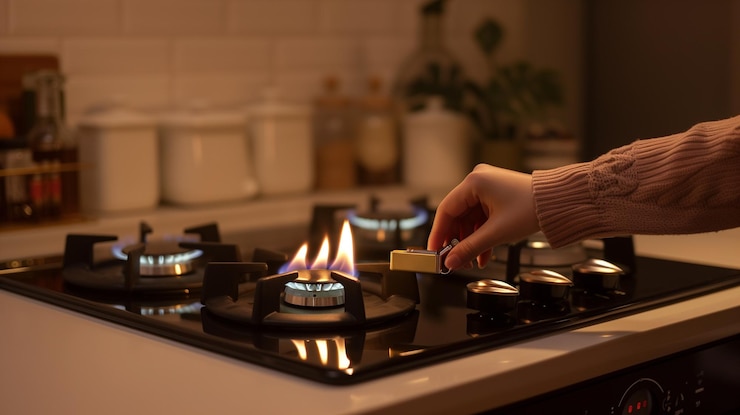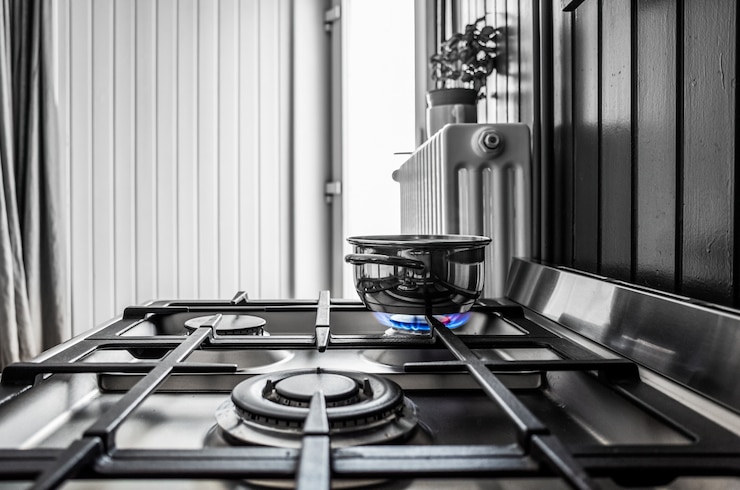Is your gas stove not lighting, no matter how many times you turn the knob? You hear a clicking sound, but there’s no flame. Or worse—you smell gas, but nothing happens. These are common problems in many households, and understanding what’s going on is key to fixing them safely. In this guide, we’ll explain what causes these issues, how to troubleshoot them, and when it’s time to call in a professional.
Why Your Gas Stove Isn’t Lighting Properly
Gas stove ignition relies on a careful combination of fuel, air, and spark. When one of these elements is disrupted, ignition fails. Let’s explore the most common reasons.
1. Clogged Burner Heads
Food particles, grease, or spills can block the burner ports, preventing gas from flowing properly. If you hear a click but no flame, this could be the issue.
Fix it:
Turn off the stove, remove the burner cap, and use a pin or soft brush to clean the small holes. Make sure everything is dry and positioned correctly before trying to ignite again.
2. Igniter Isn’t Working
If there’s no spark, or if the spark is too weak, the igniter may be damaged or dirty. Sometimes, moisture can interfere with its performance.
Tip:
Try lighting another burner. If only one doesn’t spark, the igniter for that burner may need cleaning or replacement.
3. Misplaced or Wet Burner Cap
Burner caps must sit evenly for proper gas flow. A cap that’s off-center or damp can stop your stove from lighting.
Quick check:
Ensure the cap is centered and dry. You can use a towel or a hairdryer to speed up drying.
4. Power Supply Issues
Gas stoves with electric ignition need power. If your stove is unplugged or the circuit is tripped, ignition won’t happen.
What to do:
Confirm the stove is plugged in and the outlet is functional. Reset any tripped breakers.
5. Broken Spark Module or Ignition Switch
If all burners are clicking but none ignite, the spark module or ignition switch might be faulty.
Solution:
These are complex electrical components. If you suspect this, it’s time to schedule professional Gas Stove Repair for accurate diagnosis and safe handling.
If You Smell Gas but the Stove Won’t Light
This situation can be dangerous and should never be ignored. If your Gas Stove Won’t Light But Smell Gas, take the following steps immediately:
- Do not try to light the burner.
- Do not use any electrical devices or open flames.
- Open all windows and doors for ventilation.
- Turn off the gas supply if possible.
- Leave the house and call your gas provider or emergency services.
Gas leaks are hazardous and can lead to fire or carbon monoxide poisoning. It’s crucial to act quickly and safely.
When to Call a Professional Technician
Some problems can be safely addressed at home, but if these signs occur, it’s time for expert help:
- Multiple burners won’t ignite.
- You see sparks but no flame across all burners.
- Persistent clicking even when burners are off.
- Visible damage to wires, igniters, or control knobs.
- Recurring gas smell during operation.
Technicians have the tools and experience to assess ignition systems, check gas flow, and make precise repairs to avoid costly or dangerous outcomes.
Prevent Future Stove Problems
Avoid repeat issues with regular cleaning and inspection. Here’s how to keep your stove running smoothly:
- Wipe burners and surrounding areas after each use.
- Deep clean burner heads weekly.
- Check igniters for residue or moisture buildup.
- Test all burners monthly to ensure even flame and ignition.
- Schedule annual maintenance with a certified appliance technician.
Simple habits go a long way in preventing buildup and keeping your stove responsive.
Final Thoughts
A gas stove that won’t light is more than a minor inconvenience—it can be a safety hazard. From dirty burners to ignition failure, many causes are easy to identify and fix. But when you smell gas or the issue persists, don’t risk it. Prioritize safety, and call for professional Gas Stove Repair when needed.
Understanding your stove’s warning signs helps you take fast, informed action, so you can get back to safe and seamless cooking.





